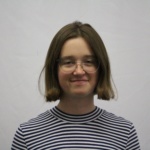
Art is a central aspect of any country’s culture, and examining art from around the world can allow one to connect with others on a deeper level.
Despite containing numerous interesting pieces, the Torrance Art Museum’s newest exhibit, “Dae-bak Super Cool,” which highlights the works of Korean and Korean-American artists, lacks a unifying theme to tie the pieces together. However, the exhibit provides relevant cultural and historical background that helps viewers better understand the artists’ intentions when creating their distinctive pieces.
“Dae-bak” means “super cool” in Korean. The exhibit seeks to explore the complex art scene in Korea that is currently attracting international attention. It also attempts to pick apart the disparity in beliefs between the older and younger generations in both Korea and the United States.
The Torrance Art Museum paired with the Korean Cultural Center Los Angeles, an organization devoted to educating the public about the history and culture of Korea, to create “Dae-bak Super Cool,” which features the work of 10 artists.
Artist statements dispersed throughout the exhibit provide helpful context and details about the artists’ backgrounds and the focuses of their artwork. These explanations provide useful facts about the artwork that the average exhibit-goer might be unfamiliar with regarding the culture and history of South Korea.
Although “Dae-bak Super Cool” features numerous attention-grabbing works, it is scattered in its design and somewhat confusing. Each of the sculptures in Hwan Kwon Yi’s “Three Siblings” series are located in different areas of the exhibit space, which is disorienting and disrupts the flow of the exhibit.
While the exhibit highlights the unique perspectives of Korean and Korean-American artists, it lacks cohesion, as featured artists use different styles, media, and themes. The only connection between the works is the fact that creators are Korean and Korean-American, but “Korean art” is too broad of a classification to encompass the variety featured in the exhibit, leaving attendees scratching their heads at what the connections are between completely unrelated pieces.
The exhibit hall is sparsely populated with pieces. The empty space on the walls could have been better utilized with additional pieces.
The most visually pleasing and interesting pieces in “Dae-bak Super Cool” are those included in Soung W. Park’s “Aesthetics Discovered of Modern Architecture” series. The vibrant colors in the digitally-altered photographs create dynamic shapes that appear to move across the image.
Despite its lack of a unifying theme and insufficient number of works, “Dae-back Super Cool” features numerous highly engaging pieces that reveal distinct perspectives of Korean and Korean-American artists.





Leave a Reply